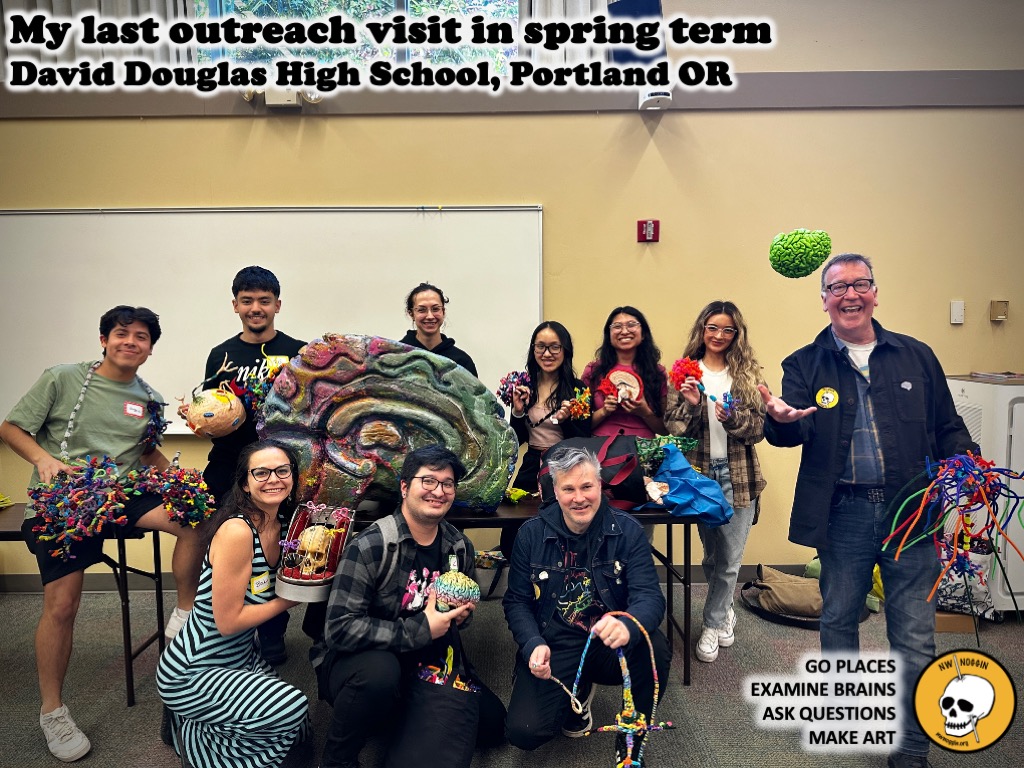Post by Diego Sanchez, an undergraduate pre-Physician’s Assistant in Psychology pursuing an Interdisciplinary Neuroscience minor at Portland State University.
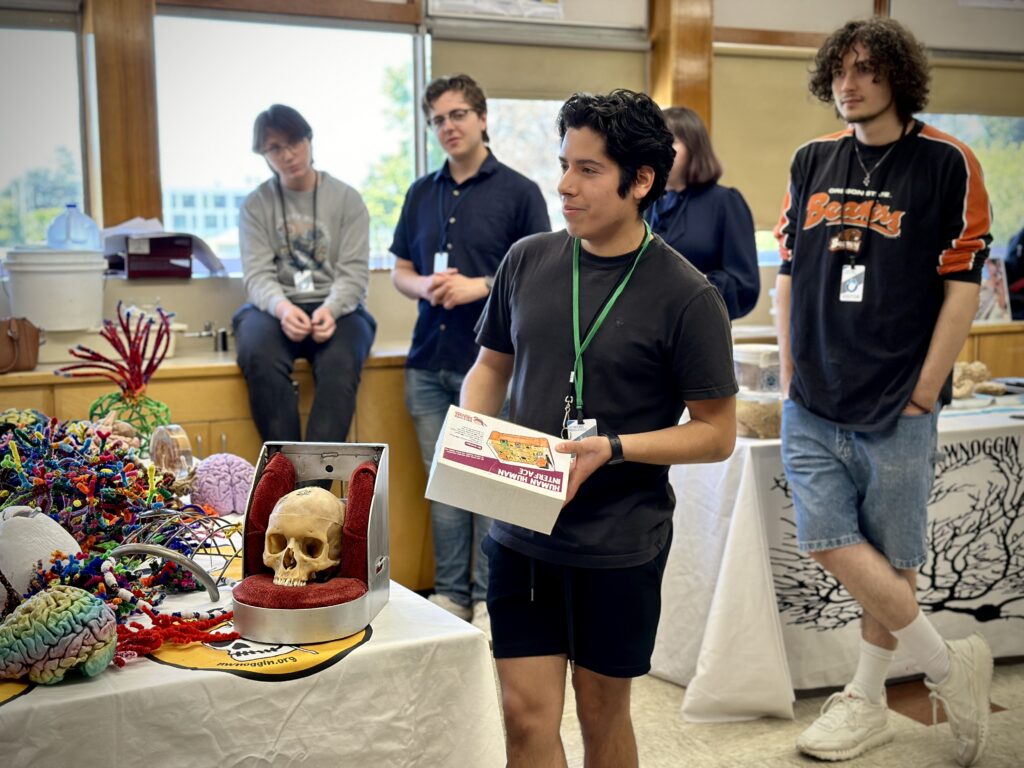
There are many activities that I enjoy doing when I have the time. I like to travel, go to the beach, watch a movie with the family, and so forth.
Two pursuits that particularly stand out for me are sports and video games.
I have been involved in sports for most of my life, with soccer, basketball, volleyball, swimming, and running being my main interests. Additionally, while I don’t play too many video games, one video game I do play competitively with Santi, my brother, is Fortnite. Despite these being leisure activities, I take both sports and gaming seriously, dedicating time to training and staying consistent.
This dedication led me to choose a topic that combines both of my passions: Reaction Time.
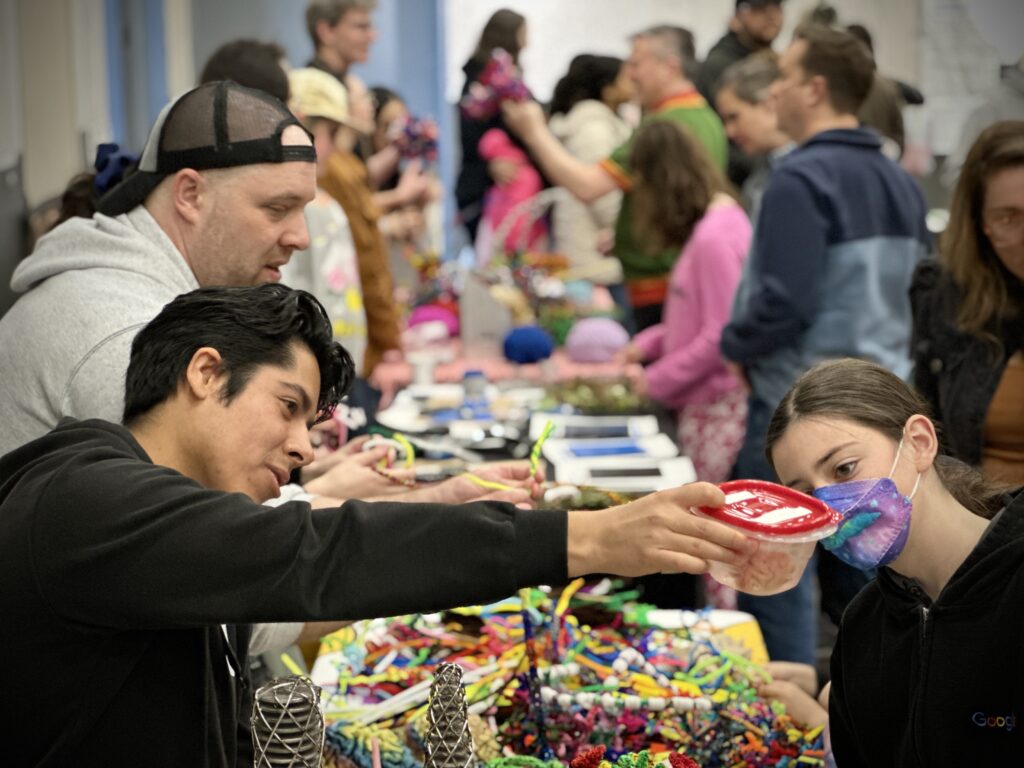
My interest in this area was further fueled by my experience during community outreach, where I got the chance to work with neuroscience equipment, including a cool device called the “Human-Human Interface” from the nonprofit Backyard Brains. The purpose of the device was to visually (and viscerally!) demonstrate how the brain controls muscle movements.
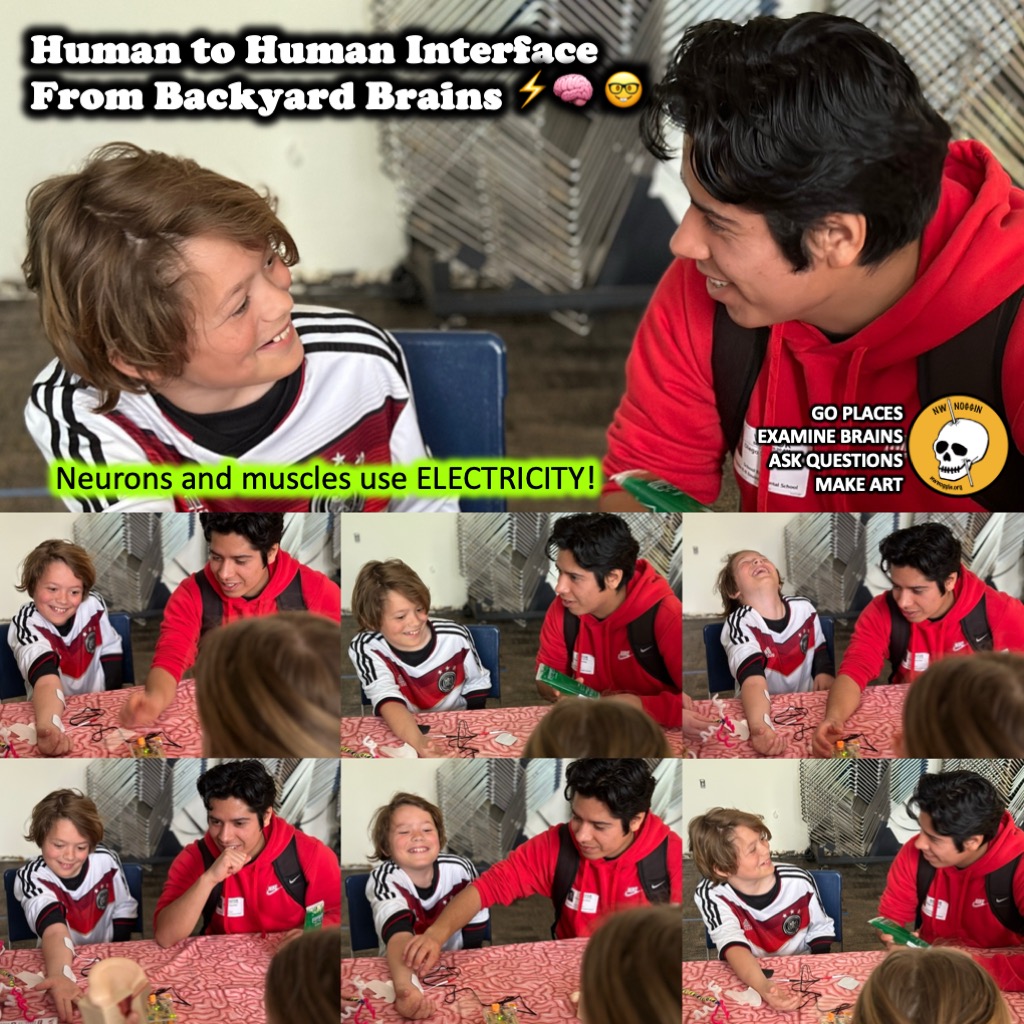
The Human-to-Human Interface involves one individual connected with three electrodes and another person with two electrode pads placed on their arm to deliver electricity to their ulnar nerve. As the first individual (with three electrodes) commands their arm to move, their muscle activity is detected by the interface and a TENS unit then delivers current to the other person’s arm – forcing their arm to move!
LEARN MORE: Brain hacking is electric!
This fascinating experience, which the students I worked with absolutely loved exploring, reinforced my interest in the neuroscience of reaction time and the electrical transmission of information to muscles, inspiring me to explore this topic further.
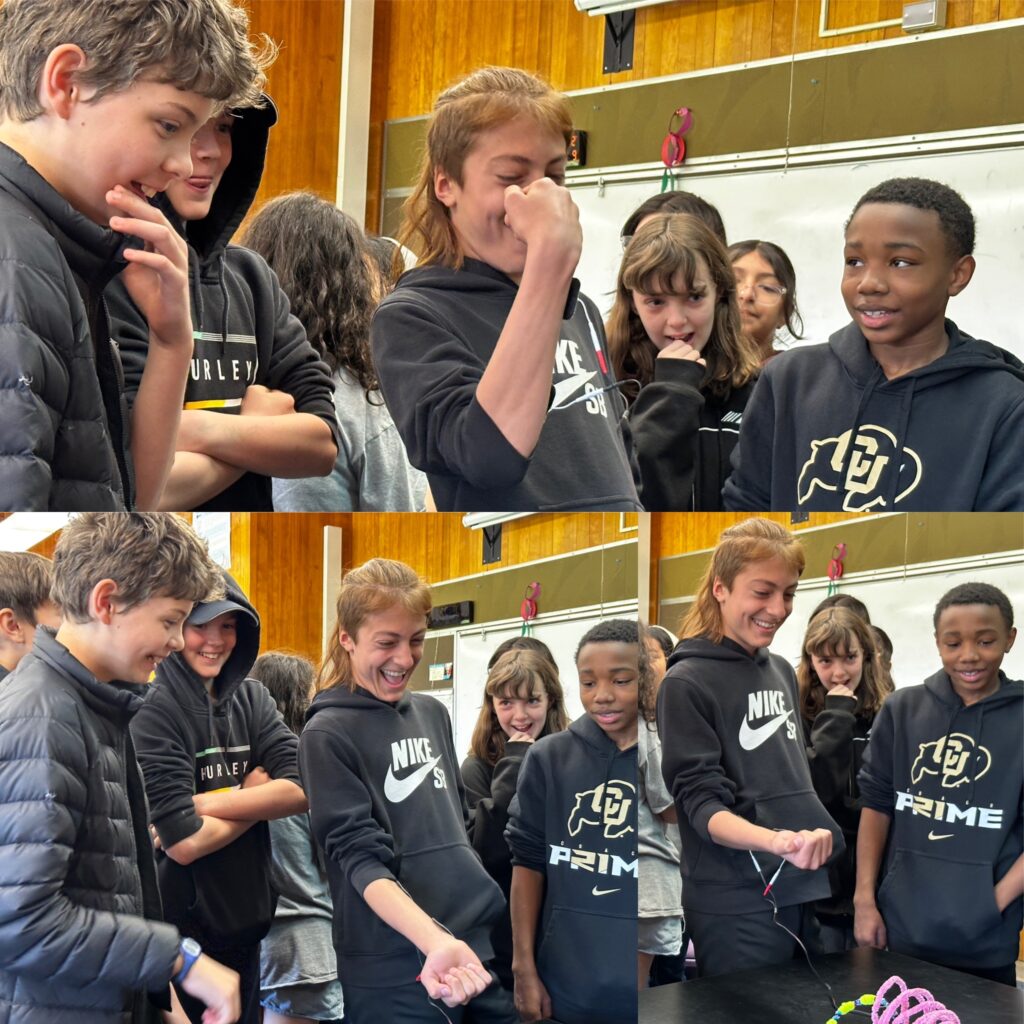
What is reaction time?
Reaction time refers to the time it takes your body to react to a stimulus.
When a specific stimulus is presented, that information travels to the brain, is processed, and a physical response is then initiated – all of which can happen in milliseconds (thousandths of a second).

What is a stimulus?
A stimulus is an external or internal occurrence that elicits a response from a sensory system.
“In our daily lives, we receive numerous stimuli and their inputs over a short period…”
— Asaoka, et al (2023)
Sensory modality refers to the type of stimulus detected by each sensory system; for example, thanks to specialized sensory neurons, we can detect visual (electromagnetic radiation/light), auditory (sound waves), tactile (mechanical manipulation), chemical, and thermal (temperature) modalities, among others.
LEARN MORE: Your Invisible Sixth Sense
Imagine this scenario: during a corner kick or a long driven pass, a soccer player experiences physical contact from another player (tactile), watches the ball approaching through the air (visual), all while hearing the voices of thousands of fans from the stadium and other players (auditory). This illustrates how multiple sensory modalities may be engaged simultaneously.
Furthermore, each stimulus within a modality may have various characteristics. For instance, light, a visual modality, can vary in color and brightness intensity. These qualities add complexity to how one perceives and responds to stimuli.
Stimuli in sports
There are various kinds of stimuli, but the most important ones involved during sports and video games (Esports) are visual and auditory.
Visual stimuli
Visual stimuli are perceived through the sense of sight. Anything related to color, light, shape and movement in the visual field can be recognized as visual stimuli.
Regarding reaction time, seeing a shooting star may be an example of visual stimuli. Once you see a shooting star, you perceive, process, and respond to the stimulus. In this case, responding to the stimulus could be pointing at the night sky and yelling “shooting star!”

Test your reaction time with visual stimuli!
Auditory stimuli
Auditory Stimuli are perceived through the sense of hearing. Anything related to sounds, music, and verbal communication can be recognized as auditory stimuli.

When it comes to reaction time, turning down the volume of a song because it’s too loud would be an example of a behavioral response to auditory stimuli. You perceive, process, and respond to the stimulus by turning down the volume of the music.
LEARN MORE: Epidemiology and Risk Factors for Hearing Damage Among Adults Using Headphones
LEARN MORE: Headphones and Other Risk Factors for Hearing in Young Adults
How does your nervous system determine reaction time?

“The sensory system is the portion of the nervous system responsible for processing input from the environment…”
— Koop and Tadi (2023)
We have multiple sensory systems, each specialized to detect stimuli is a particular modality. Once a sensory system detects relevant inputs from the environment, this sensory information is transmitted to the central nervous system via specialized sensory (or afferent) neurons and neural pathways.
Sometimes the spinal cord and/or brainstem process the stimuli, responding with rapid reflexes.
However, in many cases our brains process the information, and we consciously perceive the stimuli. We might then plan the appropriate sequence of muscle movements (motor planning) needed to achieve a desired behavioral outcome. Lastly, our brain responds with motor execution, as the motor cortex in our frontal lobes sends electrochemical signals to our brainstem and spinal cord and ultimately our peripheral nerves, which activate the required muscles and initiate our physical response.

LEARN MORE: Neuroanatomy, sensory nerves
LEARN MORE: On the speed of mental processes
LEARN MORE: Reactions and Reflexes
Reaction time is a crucial component in athletic performance

IMAGE SOURCE: [400+] F1 wallpapers
“Racing, it takes strength, it takes tremendous will, intelligence, and sensitivity…”
— David Harbour, Gran Turismo (2023)
Quick and efficient reaction times may be how a professional race car driver survives.
WATCH THIS: Racing Driver Reactions Are Unreal
WATCH THIS: Race Highlights | 2024 Monaco Grand Prix
Formula 1 cars often reach speeds of 220 mph or 354 km/h. Additionally, drivers experience a temperature of 60°C or 140°F while driving, and a g-force twice what an astronaut experiences during lift off. The demands of the sport are physically and mentally challenging, and it is under those conditions that drivers are forced to make split second decisions that could cost them their lives. As a result, it is necessary for these athletes to practice drills that reduce their reaction time.

LEARN MORE: Why F1 Drivers Train Their Reaction Time
LEARN MORE: What are g-forces and are they caused by gravity?
LEARN MORE: Tyreek Hill’s Reaction Time vs World Class Professional F1 driver Pierre Gasly
LEARN MORE: Gran Turismo Training Scene
LEARN MORE: Reactivity, stability, and strength performance capacity in motor sports
LEARN MORE: From bedroom gamer to professional racer channel
How can I get faster?
Reaction time is mostly a genetic trait due to the fact that it is a result of impulses and information traveling through the nervous system; it is hardwired into our bodies. These biological factors make it unlikely for one to drastically improve the physical processing speed. However, there are techniques and strategies one can learn to maintain and lower their reaction time as much as possible.

LEARN MORE: Genetic factors of reaction time performance
Exercise
Physical activity and participating in sports are positively correlated with faster reaction times.

A recent comparative study on medical students found that regularly exercising healthy students had a faster reaction time than those with sedentary lifestyles, and the difference between both groups was statistically significant. According to the authors, individuals who exercise have higher rates of cerebral blood flow and this “increased amount of blood flow in the brain results in improvements in cognitive functioning due to increased supply of necessary nutrients, such as oxygen and glucose.” It is also possible that shorter reaction times in athletes could be due to “improved concentration and alertness, better muscular coordination, and improved performance in the speed and accuracy task.”
Experience
Someone highly experienced is able to anticipate when and where the stimulus might occur.
Take for example a skilled fighter. A skilled fighter becomes “skilled” through repetitive practice, training, and combat with others. All this accumulated experience allows them to anticipate when and where a hit may come from an opponent. As a result, they are able to react reflexively without thinking too much.
A goalkeeper in soccer, for instance, only has about 300 – 500 milliseconds or about 0.3 – 0.5 seconds to react, depending on how powerful the shot is. It nearly takes a blink of an eye for the ball to go in. Elite goalkeepers have become skilled through repetitive practice, which is why they are better suited to anticipate where the ball may go, thus enhancing their reaction time.

WATCH MORE: 2024 Real Madrid vs Man City Quarter-finals: Andriy Lunin Locks in
WATCH MORE: Impossible Goalkeeper Saves in Football
LEARN MORE: Reaction times can reflect habits rather than computations
What changes when we learn new skills?
When you are learning and acquiring new skills, the brain undergoes changes to optimize the learning process. Neuroplasticity refers to the brain’s ability to adapt and change. The brain can reorganize itself by forming new neural connections, which in turn allows the brain to adapt and adjust to new situations, new experiences, and learning. Neuroplasticity is defined by the National Library of Medicine as “the ability of the nervous system to change its activity in response to intrinsic or extrinsic stimuli by reorganizing its structure, functions, or connections…”
LEARN MORE: Neuroplasticity
LEARN MORE: Dynamic Brains and the Changing Rules of Neuroplasticity
LEARN MORE: Mechanisms of learning and plasticity in childhood and adolescence
Subsequently, when you are first learning or getting used to something, your reaction time is slower because conscious processing is more time consuming and complicated. However, through practice and learning from your inevitable and valuable mistakes, you will become better suited at anticipating when a stimulus may occur, and will experience (in my view) the best response – improving your reaction time.
Changes in the cerebellum
The cerebellum plays an important role when skilled fighters or athletes master a skill.

“Using all its tools, the cerebellum can learn to recognize situations and to generate optimized behavioral responses to them. Thus, the cerebellum helps to perfect and speed up the motor activity and behavioral repertoire”
— From Review of The cerebellum: earning movement, language, and social skills
LEARN MORE: The cerebellum: Learning movement, language, and social skills
LEARN MORE: Predicting sensory events. The role of the cerebellum in motor learning
LEARN MORE: Correlations between reaction time and cerebral blood flow during motor preparation
LEARN MORE: The Cerebellum Predicts the Timing of Perceptual Events
Changes in the basal ganglia
The basal ganglia are responsible for motor timing, as well as other aspects of motor learning.
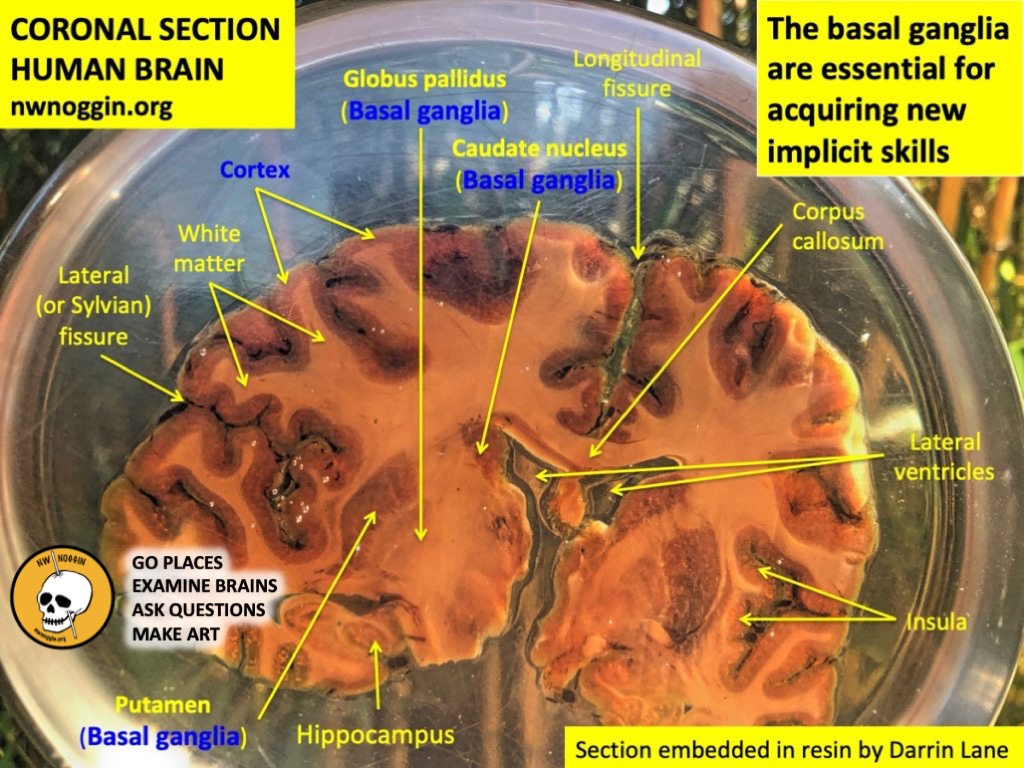
When you practice a new motor activity, such as upgrading from a normal Xbox controller to an Elite and changing your settings, your basal ganglia help refine and automate all these new required movements. The basal ganglia determine your rate of movement – and thoughts! – and when you start and stop them. Over time, these new movements become more efficient and take less conscious effort.

“The thing about being a lifelong gamer is that my eye-to-hand reaction time is faster than average. I actually went on a website that tests your reaction time and verified this to my satisfaction.”
— Arthur Chu
LEARN MORE: Learning through mistakes!
LEARN MORE: Functional Neuroanatomy of the Basal Ganglia
LEARN MORE: It’s Just Like Riding a Bike…Except It’s Not!
LEARN MORE: A neurosymphony of skills!
Sleep is important
Being well-rested and alert is highly important for good reaction times and skilled behavior.
Insufficient or poor quality sleep makes it challenging for your brain to function properly, and it may impair cognitive skills such as reaction time. That is why it is recommended that athletes get a good night’s sleep and be well rested before an important game.
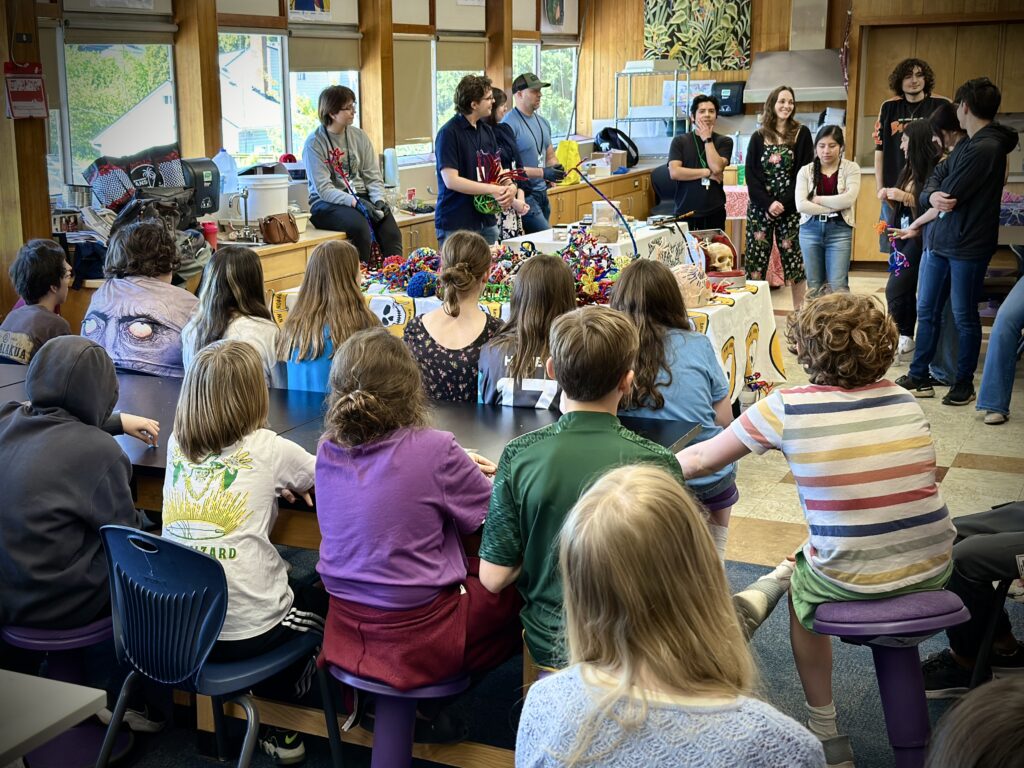
LEARN MORE: Sleep Deprivation and Reaction Time
LEARN MORE: The effect of sleep deprivation on choice reaction time and anaerobic power of college student athletes
LEARN MORE: Neural correlates of motor learning, transfer of learning, and learning to learn
The Impact of Fortnite
“There aren’t many sports where reaction time isn’t important.”
— York-Peter Klöppel, Sports Psychologist
Fortnite is a highly competitive video game that requires a lot of time and expertise to learn and master. It is a game that offers popular global tournaments for top tier Esports athletes where only the best of the best can compete.

Last year’s (2023) Global Championship Winners, Cooper and Mero won over one million dollars!
Fortnite, a video game, is considered an Esport. As in most sports, including Esports, it provides an environment that can change in a split second, which is where quick reaction times come into play.
LEARN MORE: What are Esports?
LEARN MORE: Health Benefits of Esports: A Systematic Review
LEARN MORE: Professional Esports Players: Motivation and Physical Activity Levels
LEARN MORE: The Effects of Regular Physical Activity and Playing Video Games on Reaction Time in Adolescents
Here is a Simple Example of how good reaction time could save you during a game of Fortnite.
In clip above there are three key stimuli that are happening before I act: two Auditory and one Visual.
Auditory (1): The first thing you can hear (~0:01-0:02) is the opponent “editing” two builds.
If unfamiliar, this is what editing in Fortnite sounds like.
The “editing” sound makes me think that my opponent is moving, and as a result, I make my first response by building 1 floor higher (~0:01.5).
Auditory (2): The second thing you can hear is your opponent “mantling” (~0:02-3sec), and the 3rd and last thing that happens (Visual), is that opponent mantles over the wall (0:03sec). Both “mantling” cues (auditory and visual) make me realize that my opponent is climbing up, and as a result, I make my second response by jumping over my opponent and shooting him.
“Mantling” is when an opponent climbs over a wall or build.

This example is a simple one. Actual in-game scenarios are often far more complex.
For example, during an end-game environment, there may be multiple stimuli with different responses to each stimuli. The sound of “the storm” closing in may indicate that you have to move (fast!) to a different location, whereas the sound of “footsteps” or a player behind you may indicate that you have to make space and build a protective box, all of which can happen at the same time.
This type of situation requires Complex Reaction Time.
For Complex Reaction Time, there are usually multiple stimuli, with each stimulus requiring a different response. The example I just described involves an endgame scenario in Fortnite. Moving away from the storm may involve building, which is one potential response from one stimulus (e.g., the sound or visual of the storm). Shooting an opponent or building a box may be another response to a different stimulus (e.g., the sound of footsteps or the visual of a player near you). The time it takes for you to respond to the correct stimulus out of many and under pressure is known as Complex Reaction Time.
“Here we review evidence that the very act of playing action video games significantly reduces reaction times without sacrificing accuracy. Critically, this increase in speed is observed across various tasks beyond game situations. Video gaming may therefore provide an efficient training regimen to induce a general speeding of perceptual reaction times without decreases in accuracy of performance.”
— Increasing Speed of Processing With Action Video Games
LEARN MORE: Increasing Speed of Processing With Action Video Games
LEARN MORE: Terminology matters: Defining the esports athlete
LEARN MORE: Reaction time in sports
How fast can you go?
I want to express how much I’ve enjoyed these outreach activities. It is truly rewarding to see the students’ reactions while holding a brain or experimenting with the Human-Human Interface.

I also feel like I always learned something new.
For instance, while working with the Human-Human Interface, I had one student ask me “What is the fastest reaction time for a human?” During that time I had an estimated guess and I had to look it up; however, through further research, I learned that the answer to that question can vary.
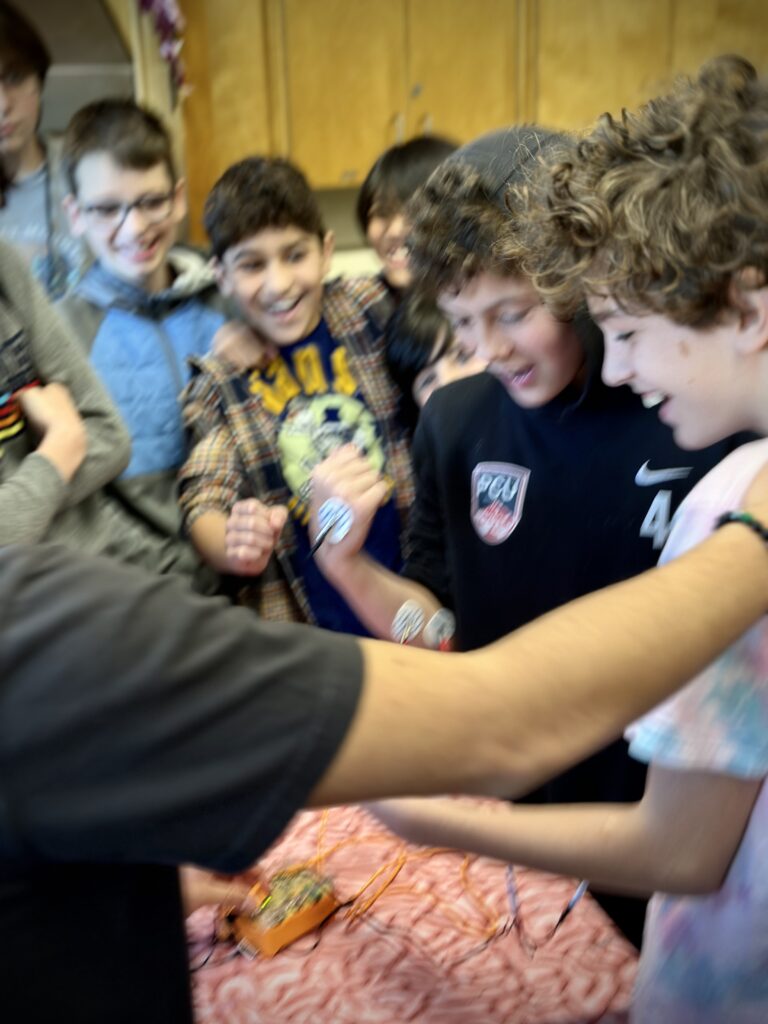
For example, auditory stimuli have been found to elicit the fastest reaction times. “Many researchers have confirmed that reaction to sound is faster than reaction to light, with mean auditory reaction times being 140-160 msec and visual reaction times being 180-200 msec” (Kosinski, 2013). However, as we learned, highly trained individuals, such as athletes or Esport professionals can improve their reaction time through specific training (Formula 1 drivers are a good example). Exercise, adequate sleep, and extensive experience were also found to enhance reaction time.
Considering the reaction times of elite athletes and through the research I have done this term, my best-educated guess for the fastest reaction time would be around 100 milliseconds or 0.1 seconds.
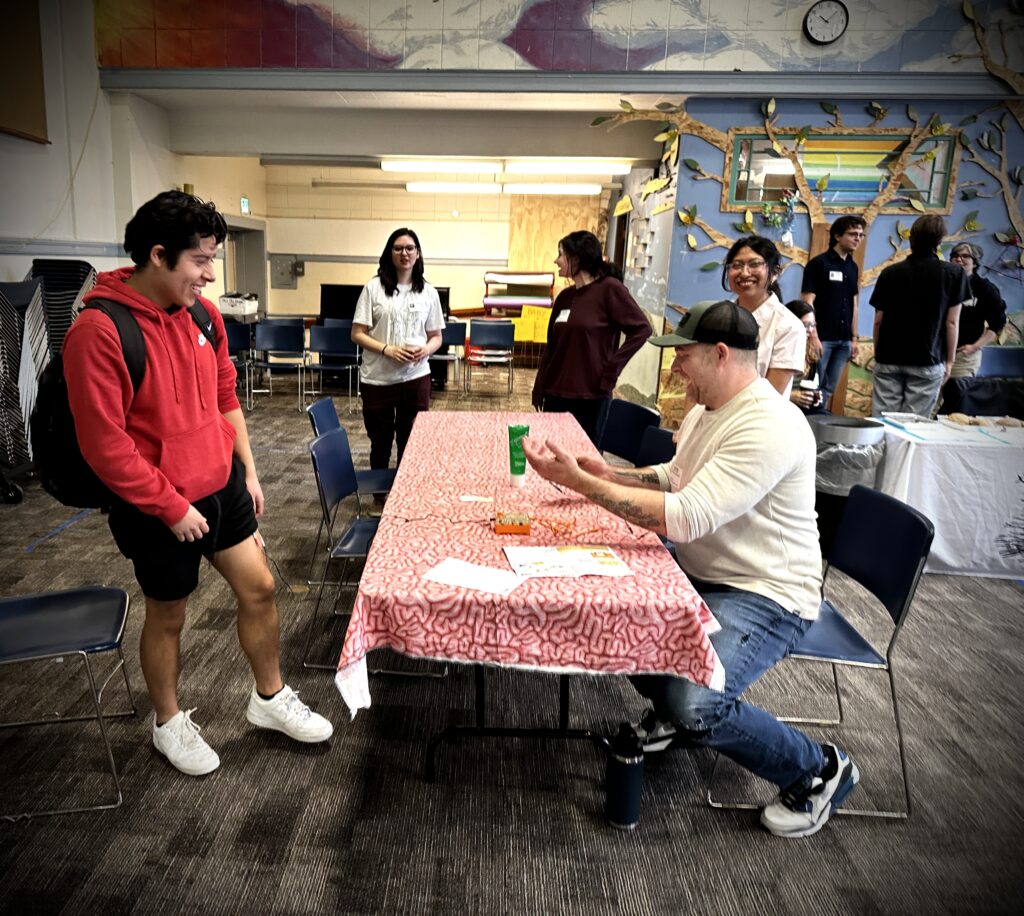
LEARN MORE: A Literature Review on Reaction Time
LEARN MORE: Speedy Science: How Fast Can You React?
